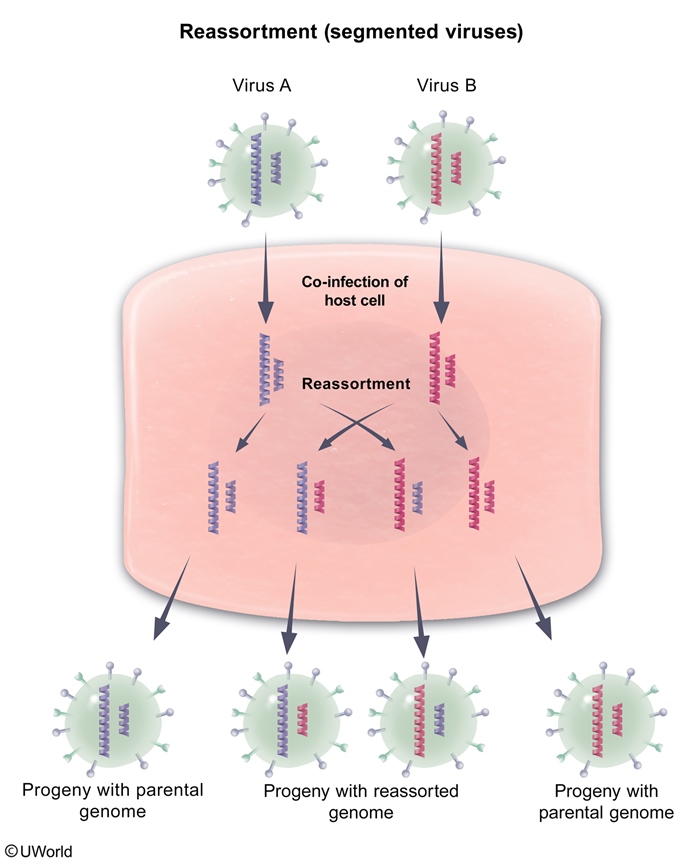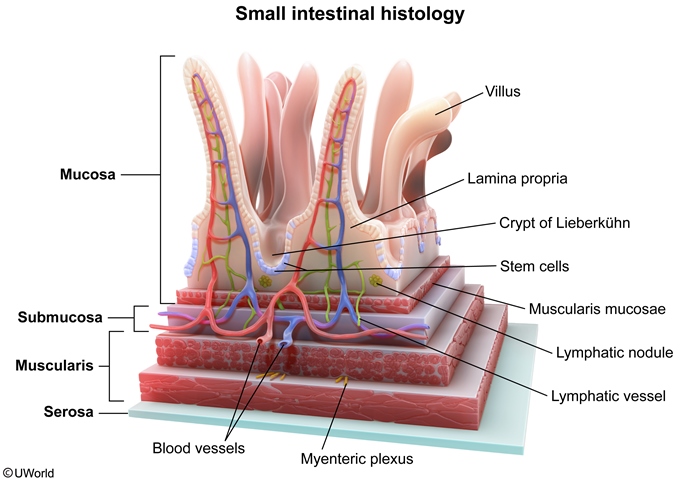Rotavirus
Article Sections
Introduction
Rotavirus is a major cause of infectious diarrhea in children worldwide. It is transmitted via the fecal-oral route and can lead to severe dehydration and electrolyte abnormalities. The incidence of disease has greatly declined because of routine rotavirus vaccination.
Epidemiology and risk factors
Rotavirus is one of the most common causes of viral gastroenteritis in children worldwide and usually presents in children age ≤3. It classically occurs during winter and can spread rapidly in crowded areas (eg, schools, day care facilities), particularly in unvaccinated populations. Poor sanitation and hygiene increase transmission risk, and symptoms are more severe in immunologically naïve, unimmunized children, particularly those age <2.
Pathogenesis
Rotavirus is a nonenveloped, double-stranded RNA virus capable of undergoing genetic shifts through reassortment due to its segmented genome (
Continue Learning with UWorld
Get the full Rotavirus article plus rich visuals, real-world cases, and in-depth insights from medical experts, all available through the UWorld Medical Library.
Figures

